In 1926, John Caples sat down at his typewriter and wrote the iconic ad: “They laughed when I sat down to play the piano, but when I started to play!”
That was the world’s first brand story.
The ad, which was selling piano lessons, told the tale of Jack who played Beethoven’s “Moonlight Sonata” on the piano at a concert, shocking his friends and family who had no idea he could play.
That brand story brought in a record number of inquiries and coupons, and continued to do so for many years.
Nowadays, Caple’s ad wouldn’t fly with our busy and easily distracted customers. It has too many words and not enough multimedia to retain their interest.
But the concept of telling a story to sell products or services remains just as successful.
To write “The Art of Brand Storytelling for Modern-Day Marketers” ebook, we enlisted four brand storytelling experts—Kyle Porter, Park Howell, Tamsen Webster, and Miri Rodriguez—to help us explore:
- Why brand storytelling is so powerful
- How to create compelling brand stories
- Which brands are telling the right stories
- What the future of brand storytelling looks like
Meet These Brand Storytelling Experts
Why Are Brand Stories So Powerful?
Stories have been around for over 30,000 years, with evidence found in drawings etched deep into cave walls, ancient fables written on papyrus, and, of course, early inscriptions of the Bible, found in Egypt.
Back then, stories were written or told to pass on information, educate people, and entertain the masses.
That remains the same with modern-day stories: Our fictional and non-fictional stories exist to entertain, educate, and inform.
Brand stories are no exception.
“It’s how our ancestors navigated and survived the savanna so many millennia ago. And it’s how we navigate and survive the Internet and the onslaught of communication that we all get. Instead of bombarding people with bullet points, charts, graphs, and lists, engage them in a story.” – Park Howell, “Brand Bewitchery” author & Business of Story podcast host
Brand storytelling works because, in addition to informing, educating, and entertaining, authentic brand stories connect businesses with their potential customers by triggering emotions.
“Brand storytelling is the emotional transfer of information, data, opinions, and assertions. It’s this type of emotional transfer that we want to give our customers.” – Miri Rodriguez, CEO of Be Mindful Be Happy, author of “Brand Storytelling,” and storyteller at Microsoft
Psychologists have found that the human brain is 22X more likely to remember facts if they’re associated with a story.
People might eventually remember a brand slogan or a tagline if they see it enough times. If people are emotionally connected to the story that sits behind the slogan or tagline, however, they’re more likely to recall it quicker and remain engaged with the key messages for longer.
It’s easy to tune out a simple slogan. A well-told, impactful tale? Not so much.
A study run by The London School of Business found that people retained around 10% of information if it was presented to them in a series of cold, hard facts and figures. But if the information was presented to them in a story format, they’d remember up to 70%.
Think about school. Wasn’t it far easier to remember science formulas or math equations when an anecdotal story was behind them?
We’d remember the characters and the plot lines, which were tied up in the real lessons we were learning. I can still recall how “Mr. Norman Numbers” helped me figure out how positive and negative numbers worked.
And there’s a scientific reason behind why we remember stories better.
Sign up for a FREE trial of Agorapulse now.
People are wired for stories
When we’re presented with any type of narrative, we go through a natural, biological process.
Our brains start to produce more cortisol, dopamine, and oxytocin, which are hormones associated with feelings of trust. So, when we see a brand story, the release of these warm and fuzzy feelings will naturally increase our connection, empathy, and affinity with that brand.
Research by the Harvard Business Review found that when a product was paired with a story, the perceived value of that product increased by around 2,706%!
Brand stories subliminally convey the value of a product or service while drawing us in with oxytocin-induced emotion and intensity.
It’s powerful stuff.
Why is storytelling important for brands?
We know it’s loud out there on the social media landscape. And we know it’s only going to get louder. We’re under continuous pressure to come up with new and interesting ways to avoid becoming lost in the sea of white noise.
Brand stories are our lifeboat.
“You know how people have always said content is king? If content is king, then I would say storytelling is the kingdom sorcerer because that’s where the magic happens.” – Park Howell, “Brand Bewitchery” author & Business of Story podcast host
As we established earlier, brand stories biologically trigger emotions that spark connection and encourage engagement. Brand storytelling increases perceived value and helps people retain information—and remember you.
After all, research shows that brand stories have the potential to increase conversions by up to 30%.
But brand storytelling goes deeper than just making sales and conversions.
“Storytelling is an incredibly powerful communication tool, because, in addition to it being an invitation to turn a relationship into a conversation, it’s a decision-making framework based on beliefs: What we believe we want, what we believe the problem is, and what we believe to be true about the world.” – Kyle Porter, director of Strategy at Conklin Media
In this digital era, consumers are craving real contact and authentic relationships with the brands they buy from.
Consumers want to feel part of something. They want to feel emotionally connected. They want encounters to be personal and meaningful. They want relationships between themselves and a brand to be two-sided: They share so much of their personal information that they want the same in return.
The glory days of only creating fact-filled blog posts or beautifully crafted ads with catchy slogans are gone.
Our happy-ever-after comes in the shape of brand storytelling.
The Structure of a Brilliant Brand Story
“A good brand story is an argument. It’s a case. It’s an explanation for why something should be, or why something is, the way that it is. To be compelling, it really has to have some of the elements of a logical argument.” – Tamsen Webster, founder and chief message strategist at Find The Red Thread
Our panel of storytelling experts all agreed that a good brand story loosely follows the structure of a logical argument and, therefore, needed just three parts:
- The status quo
- The conflict
- The resolution
“Brand storytelling is a three-act structure of how do we get things set up, how do we introduce conflict, and how do we resolve it?” – Tamsen Webster
Part 1: Status quo
This first part is all about setting the scene and letting people know where we’re at and what the status quo is.
All brands have a story. The who, what, and why behind every brand is an essential part of setting the scene in brand storytelling.
“The first part of a brand story should serve to enable potential audiences to understand the origin of that brand and why it exists. It should affirm the mission of the brand and position it as a human entity with a voice: It was born one day, it has friends and foes, and it’s growing.” – Miri Rodriguez, CEO of Be Mindful Be Happy, author of “Brand Storytelling,” and storyteller at Microsoft
Introducing your audience to who you are and telling them what’s important to you—and why—will go a long way toward building a community that will support your brand through thick and thin.
Part 2: Conflict
Part two needs to build tension. A good way to do this is to present the audience with a problem that triggers some kind of drama, adversity, or conflict to keep the audience hooked.
We can learn a lot from the bedtime stories we used to hear as kids. Take “Little Red Riding Hood,” for example. The Big Bad Wolf presented a huge problem for Little Red Riding Hood. The story created a huge amount of drama and conflict that kept us on the edge of our seats throughout the whole story. (In hindsight, perhaps “Little Red Riding Hood” wasn’t the best story for bedtime … )
It’s the same for brand stories.
For brand stories to hold our audience’s attention, we need to take them on an emotional journey that they can either relate to or feel inspired by. Bringing in a problem that creates conflict, adversity, or drama is a huge part of that.
“A brand story ultimately comes down to finding the crux of a problem: What is the number-one problem that you, a customer, a colleague, or a stakeholder have had? Build your story around that.” – Park Howell
But many brands are reluctant to reveal their true problems.
The idea of laying out their imperfections, issues, and conflicts for all to see horrifies them.
Instead, they’d prefer to present a blemish-free story of continuous, unwavering growth, prosperity, and success because they believe that that is what will convince people they’re best-in-class.
But customers aren’t daft.
They know you’re not perfect. They know you’ve faced problems, and they know you’ve overcome difficulties and challenges.
Do you know how they know that?
Because they’re not perfect either. They, too, have struggled their way through tough times and made it out the other side.
That, my friends, is the story of life.
Conflict is the key to a good brand story. So is authenticity. Be transparent. Confidently tell the tales of the conflict and adversity you’ve faced and overcome.
Part 3: Resolution
This part is about resolving the conflict you described in part two because it disrupted the status quo you presented in part one.
The conflict has put something important at stake, leaving room for you to swoop in, fix the problem, and give your audience the emotional payoff they’ve been waiting for.
If you’ve described the status quo and the conflict in your brand story well, your audience will see you as the leading character in your tale. They will happily ride the rollercoaster of emotions with you: from the beginning feelings of trembling suspense or ecstatic joy to the freezing fear and plummeting disappointment along the way, to the end when, ahhhhhhh … A resolution has been reached, at long last.
“If we just go on and on and on without a set-up, problem, and resolution type of dynamic, then we are just adding to the noise and adding to our own competition.” – Park Howell
How to Write a Brilliant Brand Story
We can all picture the Golden Gate Bridge in San Francisco, right?
It’s a perfect metaphor for brand story development.
“See the two towers? They’re dividing chapters one, two, and three. See the big, main cables that run along the top? They represent the overall brand narrative. Then, those thin vertical suspension wires that are holding up the big cables, they’re the little brand stories that support the main, overarching one.
So it’s not like you need to tell an all-encompassing story every time you put something out there. You’re just supporting the main brand narrative.” – Park Howell
Once your initial brand story has been established, you can then branch out and add new facets to it to strengthen and support it.
“You don’t have to tell the entire story, top to bottom, front to back in one go. Hone in on exactly what the main messaging needs to be and what you’re inviting people into, and then continue to reinforce it.” – Kyle Porter
You need to build your main Golden Gate Bridge story with a solid foundation. Then keep reinforcing it with smaller stories, so that your customers can safely travel across it to reach you.
“Begin by really understanding your main brand story and then use little supporting scenes, those moments where you’ve had a significant impact on the lives of your customers, to keep engaging.” – Park Howell
But what are the key things to remember when constructing your Golden Gate Bridge brand stories?
1. Know who you are
“If you have a clear understanding of what your brand believes in and what your audience believes in, you’ll be able to tell better, more emotionally driven, and empathetic stories.” – Tamsen Webster
If you’re hoping to trigger an emotional response with a brand story, you need to present your complete self, warts and all, to your audience.
To do that, you need to know who you truly are as a brand:
- What do you stand for?
- What do you believe in?
- What value do you offer?
- What changes are you making happen?
- How do people really feel about you?
- What are they saying about you when you leave the room?
- Beyond the products and the services that you sell, who are you?
Humanize your company because, after all, people buy from people, not corporations.
“Assess your brand mission and find your universal truth. Find out what it is that your brand is making people feel. Define it. If you don’t know this, bring together people from other verticals of the company and think about what that is – what your universal truth is” – Miri Rodriguez
Knowing who you are, what you do, and why you do it will make telling an empathetic, emotion-triggering brand story much easier.
2. Realize that it’s not ALL about you
My customers don’t care nearly as much about my story as they do their own.” – Kyle Porter
There’s a fine line between showing your audience who you are as a brand and telling them, in minute detail, what’s going on in your world.
“It can be easy to fall into this trap of: Here’s what I’m doing today, here’s what our business has been doing, here’s this new client we’ve just landed, and here’s how long we’ve been in business.” – Kyle Porter
People don’t care, though.
“Your brand story is not about what you make. Nobody cares about what you make. It’s about what you make happen.”- Park Howell
Create brand stories that are centered on what your audience is looking for rather than what you can offer.
3. Be intentional and focused (and don’t go on and on … and on)
“How many times are we bombarded with stories, reels, and images when we go onto Instagram? Our brains have become programmed to just keep scrolling onto the next thing.” – Park Howell
If you want your story to be heard over the deafening white noise that surrounds us all, be focused and intentional about what you put out there.
Take time to think about how to tell your story, what messages you want to drive home, and which platforms will be the best carrier for your story. (Instagram isn’t always the answer).
“How often are we at dinner parties and stories just go on and on and on? There is no point to them. You’ve got to be intentional about what you’re telling people in your stories and then get creative with how you tell them.” – Park Howell
4. Don’t worry if you’re not Coca-Cola
“Brands in industries like finance or law tend to think: ‘We’re not Coca-Cola! We can’t be that creative with our brand stories.’ And that’s understandable. But you don’t have to be big and fancy like Coca-Cola to make a compelling brand story.” – Miri Rodriguez
Brands in heavily regulated industries, like finance or law, often struggle with creativity because they’re boxed in by rules, restrictions, and reels and reels of red tape. But as the infamous Internet personality Andrew Tate always says: “Constraints BREED creativity.”
Find your way around the roadblocks: What emotions can you evoke from your audience? Can you draw on nostalgia? Can you talk about the future?
“Think of a book, a piece of poetry, or a film. The ones you remember are the ones that got your emotional side and made you respond.” – Miri Rodriguez
You might not have the marketing budget that a big, creative brand like Coca-Cola or Apple has, but don’t be afraid to try out new things with your audience to see how they respond. For example, amateur, home-shot footage always is a treat because it’s REAL. It’s human.
“There are always opportunities for government and public sector companies to tell a story that emotionally connects because humans sit behind every brand… you could tell the story behind the engineer that made a piece of technology, or the CEO that came from an immigrant background. It might evoke a ‘Wow! I didn’t know that about my bank.’ type of response.” – Miri Rodriguez
5. Be unapologetically and consistently YOU
If you weren’t in the hotel industry but suddenly opened a hotel, would people instantly know it was your hotel?
Consumers interact with brands across multiple touchpoints. So, every brand story you tell, from the first main edition to its subsequent sequels needs to be distinctively and unquestionably you.
The brand voice, messaging, and tone need to be instantly recognizable and remain connected and consistent across all channels.
“A good litmus test of that is, is the narrative that you’re telling transferable?” – Kyle Porter
Think of it like this: If Patagonia opened up a hotel, what would it look like and how would you know you were in a Patagonia hotel rather than an Apple, Tesla, or Coca-Cola hotel?
“If you can’t take your company and drop it into another industry and start to envision what it might look like there, then you’re not being clear or consistent enough with the story that you’re inviting people into.” – Kyle Porter
Without consistency, you’ll appear disjointed and unauthentic to potential customers.
“Take time to distribute your core messaging as deep as you can inside your own organization so that everybody who’s on your team is speaking the same language and communicating and telling the same story. Educate your team on the way that they should be communicating your value.” – Kyle Porter
6. Start NOW
“Take an idea, make it as a pilot, and then throw it out there to see what people think.” – Miri Rodriguez
Don’t overthink it.
Stories are being told everywhere by everyone. There is no one big chance to get it perfectly right. You can have as many goes as you like.
“There are endless chances to keep telling your brand story and letting people know what you’re about and why they should love your brand as much as you do.” – Miri Rodriguez
Get your story out there, and see how people react.
If they like it, keep using that approach.
If they don’t, try something new.
But do it NOW. Don’t wait for the perfect idea, the perfect time, or the perfect version.
Write it. Create it. Publish it.
The Future of Brand Storytelling
We’ve discussed where storytelling came from and where it is now. But what about the future? What does the path ahead look like for brand storytellers?
The future of storytelling is authenticity
“A story is a pattern of ebbs and flows. Sometimes, it’s really high, and sometimes, it’s really low. Exactly like life itself. Today might be a low, but that’s OK. This is what today looks like for me and it’s not always a highlight reel.” – Kyle Porter
We spoke earlier about the importance of being real and transparent with your audience because, right now, authenticity is winning over perfection.
“Microsoft, seven years ago, stepped back and said, ‘Hey, is our position in society the same as it was 10 years ago? Do we serve our community the way that we once did? Are we woke? Are we not? Do we need to be?’ These are the conversations you need to have if you’re really going to be authentic.” – Miri Rodriguez
People are favoring user-generated content over heavily photoshopped picture-perfect content because they can trust it. Customers have grown savvy to the magical abilities of image editing software and can spot fakery a mile off.
Vulnerability is more credible than boasting.
“Nowadays, I want to pull out my iPhone and document what’s REALLY happening. I want to show people what my life ACTUALLY looks like, rather than putting out this hyper-edited version. The processed, refined storytelling that’s like: ‘I’d really like to congratulate myself on my new venture’ is something that’s being punished now. People need to be much more vulnerable.” – Kyle Porter
The future of storytelling is social media
“Social media has pushed a key component of good storytelling which is: Make it about them, not just about you.” – Kyle Porter
It’s not a new marketing channel, of course, but social media networks like Instagram, Tik Tok, and Facebook are primed for brand stories. They’re hugely visual and multi-faceted platforms that allow for boundless creativity and the testing of new ideas on an already engaged audience.
Beware of the mindless scroll, however. You need to stop traffic with hard-hitting, imaginative, and emotive stories that resonate with your audience.
“Social media makes it so easy to deliver a story in so many different ways. It allows you to turn words, videos, conversations, or even events where people are sitting around and sharing their own perspectives, into stories. If I present a story to my audience in a social media context, it deepens the relationship and shows them that I’m one of their friends as they go through their journey.” – Kyle Porter
The future of storytelling is listening
While we’re busy telling our audience our story, they’re busy telling their audience—friends, family, and work colleagues—their story. About us.
We need to listen hard to these stories:
- What tale are they telling?
- Does it match the tale we think we’re telling?
- Does it resonate?
- Do they understand what we’re trying to say?
“Pause, just for a moment, and see what their perspective is. What are they saying about the brand? What are competitors saying about our brand? What are our competitors saying in general that we can use in our own storytelling to deliver a message to our audiences?” – Miri Rodriguez
And we need to use this information to craft future stories, strategies, or campaigns. We have seconds to catch someone’s attention and hold it, so grab the opportunity to find out what you can do better, with both hands.
“We have our story. We’ve crafted it, and we’re excited to deliver it. But it may not resonate because there’s another storyline that’s being told, by our audience or competitors, about the brand.” – Miri Rodriguez
In Conclusion
Everyone remembers a good story. But a brilliant brand story gets shared, passed on, and retold. By following the advice and tips in this ebook, you’re on your way to crafting brand stories that will make people engage with your content and develop a relationship with your brand.
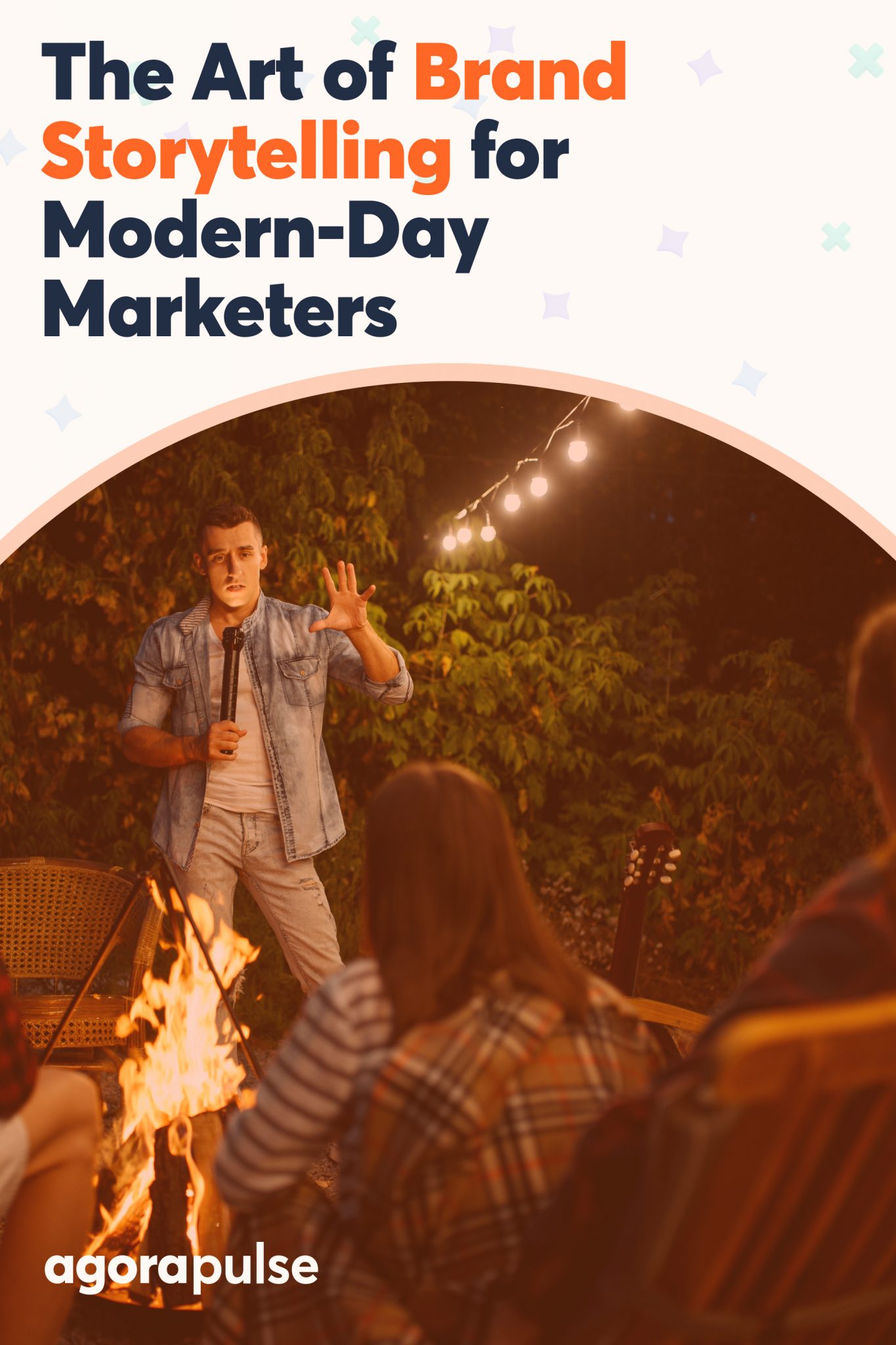
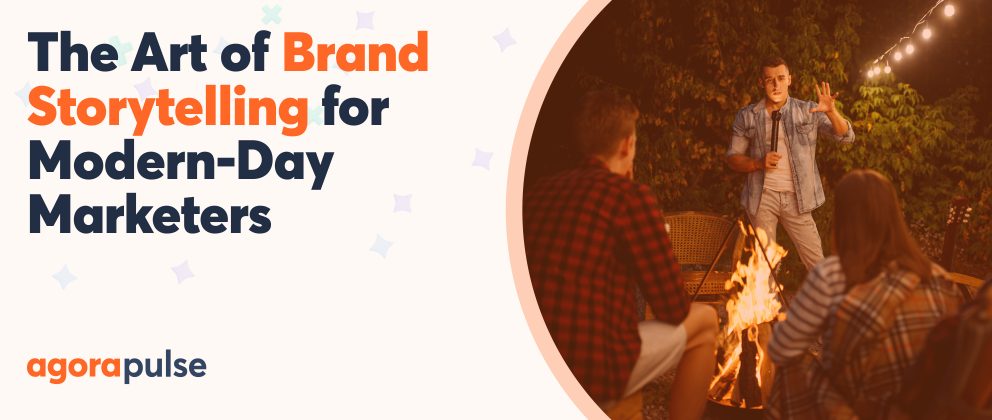

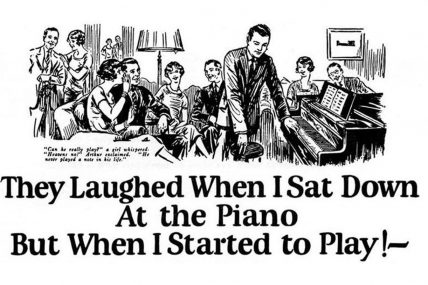
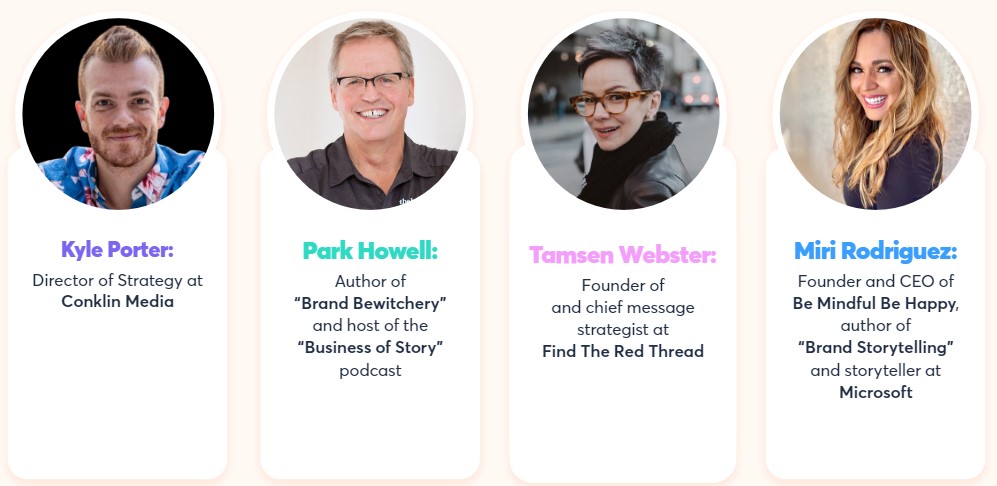





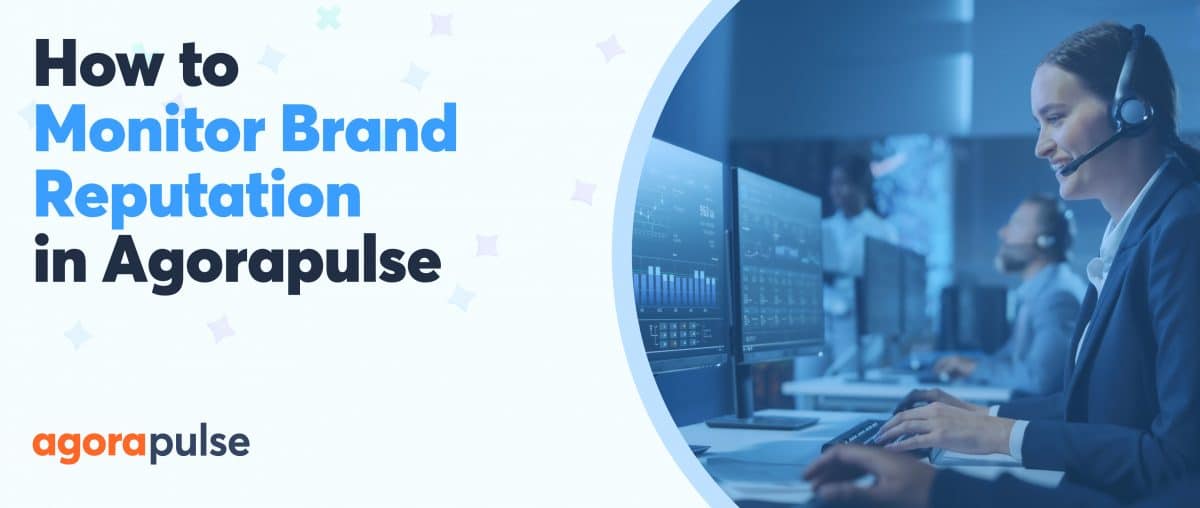
![Feature image of Why Performance Marketing Is the Key to CMO Success [Ebook] Feature image of Why Performance Marketing Is the Key to CMO Success [Ebook]](https://static1.agorapulse.com/blog/wp-content/uploads/sites/2/2023/06/Performance-Marketing-The-Key-to-CMO-Success-Blogpost-Header-1200x508.jpg)